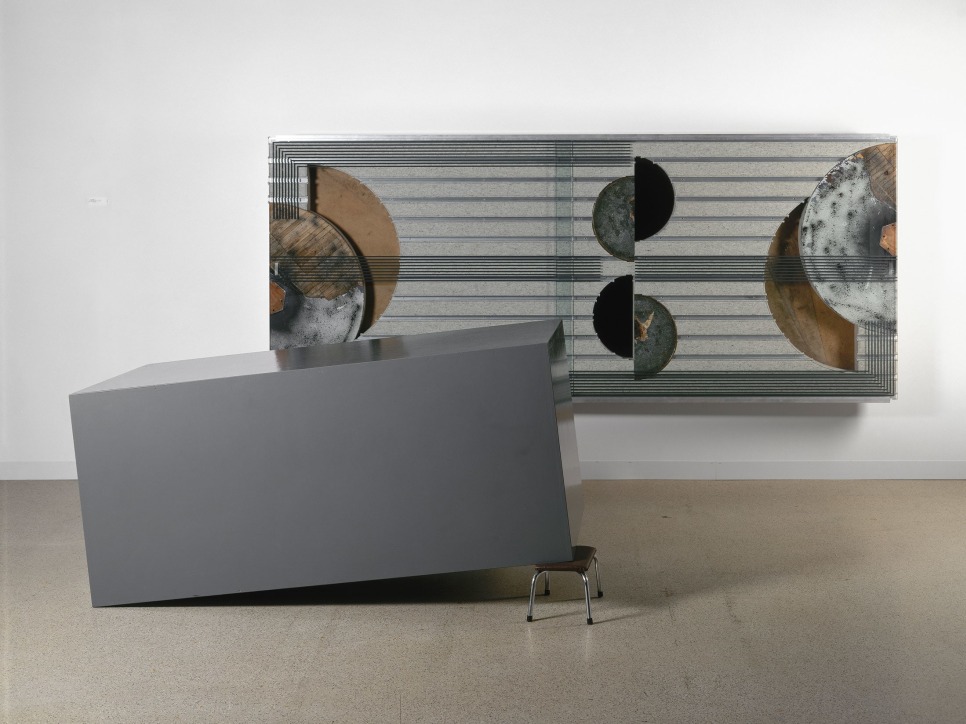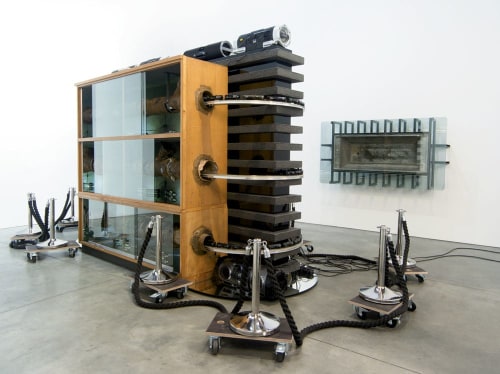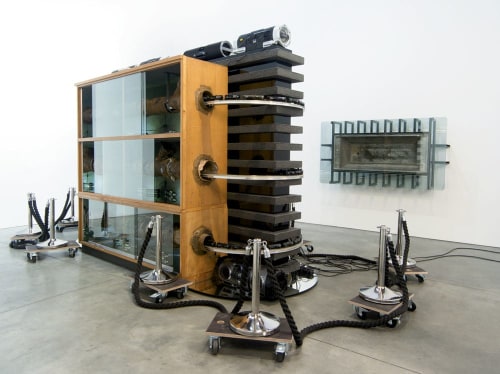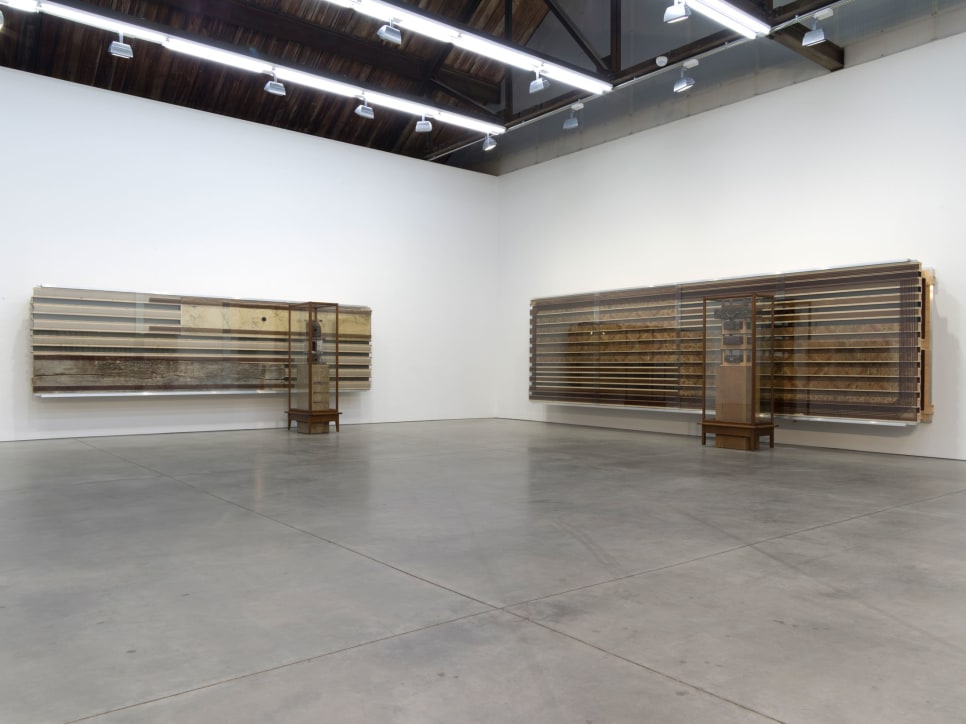

View of Reinhard Mucha's installation Straight, and (on wall) Siegen (Win), both 2013; at Luhring Augustine.
The last time Düsseldorf-based Reinhard Mucha had a solo exhibition in New York was in 1998, although he shows more often in Europe. His sculptural installations—rigorously designed and built with the exactitude of an artisan, from materials including found wood, vitrines and railway detritus—always depend heavily on the symbolic. Tellingly, the artist has called the footstool, an object that turns up frequently in his work, “a metaphor illustrating the burden of being an artist.” In a 2009 discussion with Helga Meister in Kunstforum International, quoted in English in the literary magazine Cura, he explains: “In the hierarchy of service furniture the footstool is at the bottom. Below there is only the wedge for the front door. This matches approximately the service I am offering as an artist.” Mucha’s devotion to craftsmanship and aged objects—coupled with his refusal to conform to the contemporary exaltation of ever newer technologies—makes it clear that, for him, eminence exists in that which is most humble.
For the exhibition “Hidden Tracks,” the artist returned to New York with 21 works displayed in four rooms. Despite the ample number of very large pieces, the show seemed less like an overstocked cabinet of curiosities than a selection of curious cabinets. The main gallery held four two-part sculptures composed of autonomous works created separately and later combined by the artist. Each consisted of a hefty wall-mounted structure, about 4½ feet tall and 15 feet long, with a slim, nearly 6-foot-tall, freestanding sculpture placed in front. Like all of the wall-mounted works, Hennef (2009) is named for a six-letter German town on the railway system. Resembling intarsia, it features irregular horizontal stripes of found-wood paneling, canvas and felt behind glass decorated with brown enamel stripes. Two of the largest wood panels—one weathered and cracked, the other painted to resemble marble—fight for attention. The title of its companion piece, Stunde Null (2006), translates to “zero hour,” a term commonly used for the aftermath of World War II. The tall glass-and-wood display case contains an ancient-looking pear-wood gaffer mold (used for blowing glass) stacked on a delicate antique kiln, with model railway tracks placed alongside. These objects—signifiers of German trains and ovens—allude darkly to the Holocaust.
Read full article at artnews.com


